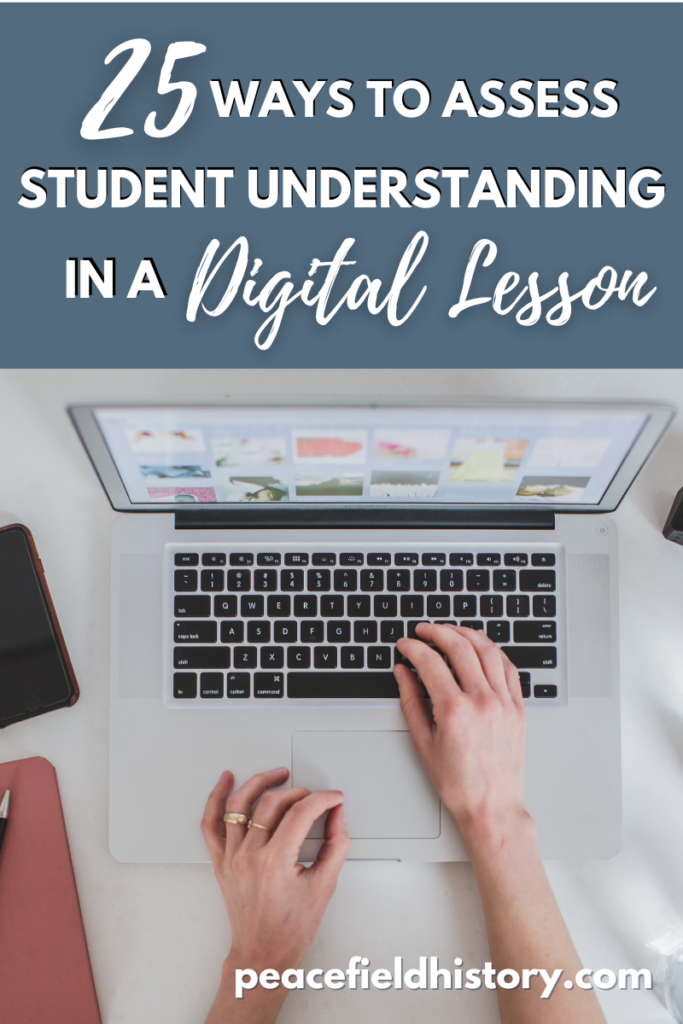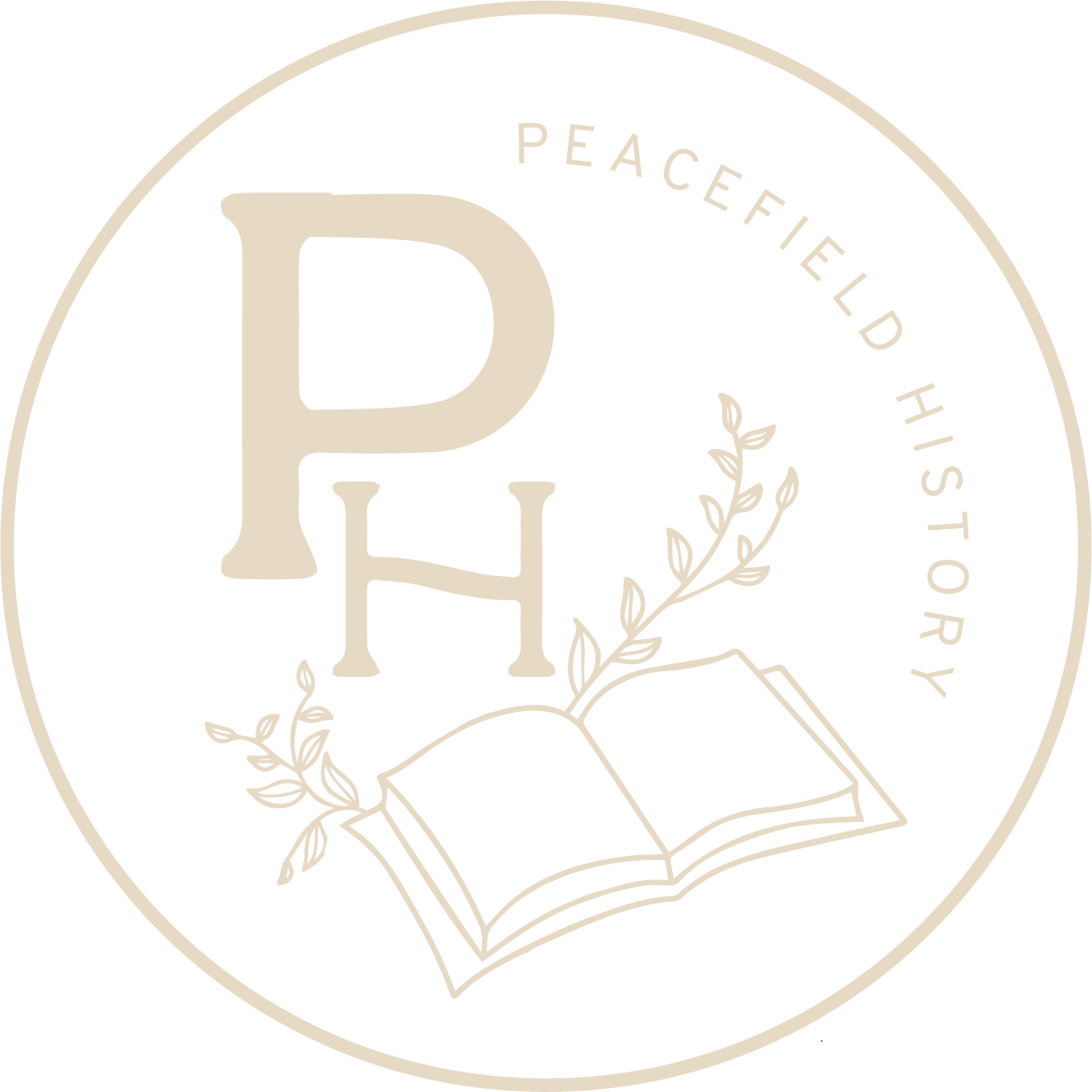
As teachers, we’re constantly assessing student understanding through questions. However, the question/ answer process can get a bit stale sometimes. Most commonly, reading passages with questions are set up in one of two ways.
| Version 1 | Version 2 |
| Text – Question about the text Text – Question about the text Text – Question about the text Text – Question about the text | Text Question Question Question Question |
It works for our more literate learners, and it works for accessing comprehension. Still, the process of working through that text can get a bit stale. Also, there are many students that struggle to interact with the text.
Sometimes, teachers need to sidestep that barrier or at least vary the way they’re asking questions to attain comprehension. Therefore, I’ve devised a list of 25 prompt ideas to assess formative understanding in a digital lesson that go beyond the simple question and answer process.
Many of the prompt ideas will work with regular pencil and paper learning. However, digital learning does offer some new opportunities for formative assessment. Also, for quick check-ins or instantaneous feedback, both Pear Deck and NearPod work well with these ideas. Still, teachers can also just implement these ideas directly through Google Slides lessons.
25 Ways to Access Formative Understanding in Digital Assignments
1. Give students a series of events and have them sort those events into true or false categories. They can also sort causes and effects.
For example, this slide has students order events relating to the compromises leading to the Civil War. You can view the full lesson that includes this slide here.
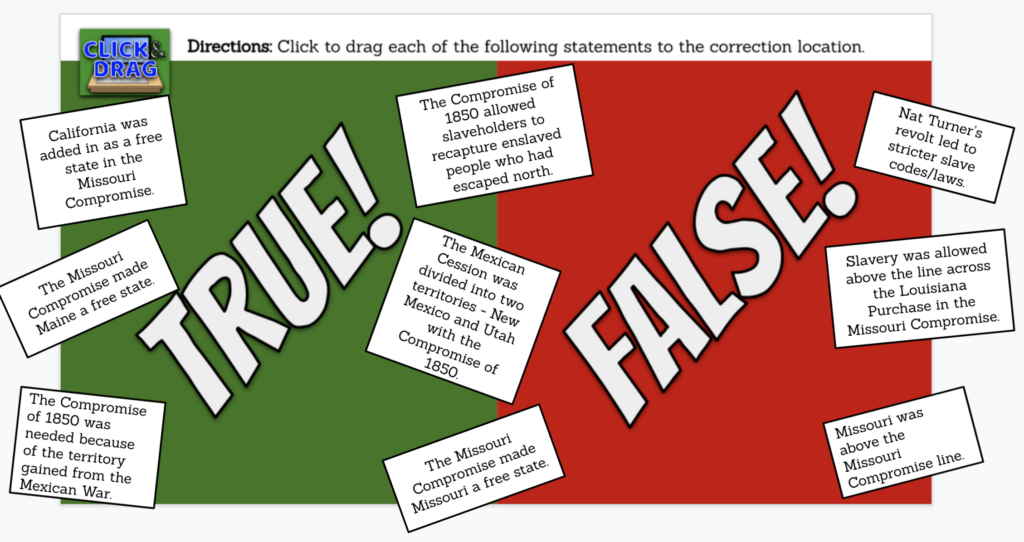
2. Use emojis to get students to determine the emotions or reactions of a historical figure. Present primary source, and have students gauge the emotion of a historical figure with an emoji. (Include possible emojis on the slide also.) Students might judge a figure’s reaction to a historical event, or an opinion stated in a primary source.
3. Add events to text boxes and have students rearrange those events in the correct order. Or, have students number the events in the correct order. Students could also draw lines to connect events to a timeline.
For example, this slide has students order events relating to Jefferson’s presidency. You can view the full lesson that includes this slide here.

4. Have students examine a historical site in Google Street View.
5. Provide students with an unfinished statement that they must complete.
6. Present some historical images, maps, or diagrams on a particular topic. Have students note differences or similarities in the images.
7. Label the evidence or details provided in a drawing.
8. Rate a historical event or a person on a scale…. helpful vs. harmful – or who was most helped or harmed by a historical event.
For example, in this lesson, students order archetypes to discuss who was helped or harmed by Reconstruction. You can the full lesson that includes this slide here.
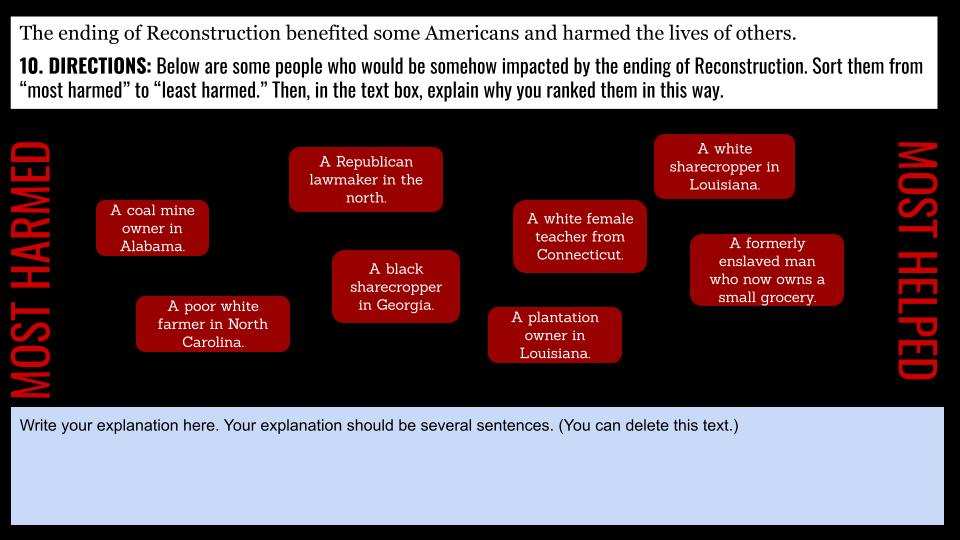
9. Draw a vocabulary term.
10. Annotate a primary source. You can give specific prompts as to what students should highlight.
11. Provide images of primary sources. Have students match the Social Studies term to the primary source.
12. Sketching concepts or ideas and explain those drawings.
13. Have students sort the correct image with the correct caption.
14. Present the image of a historical figure/s. After discussing an event related to the historical figure or figures, have the students add in thought bubbles or speech bubbles discussing that figure’s reaction. This works really well with primary source photographs.
15. Give students a bunch of primary sources. Have them match the primary source to the author, event, etc.
16. Present an image to students that has several historical characters. Have students imagine what the characters in the image might be thinking or saying to each other.
For example, in this lesson, students create an imaginary cartoon where there are interactions with Native Americans and colonizers. You can the full lesson that includes this slide here.
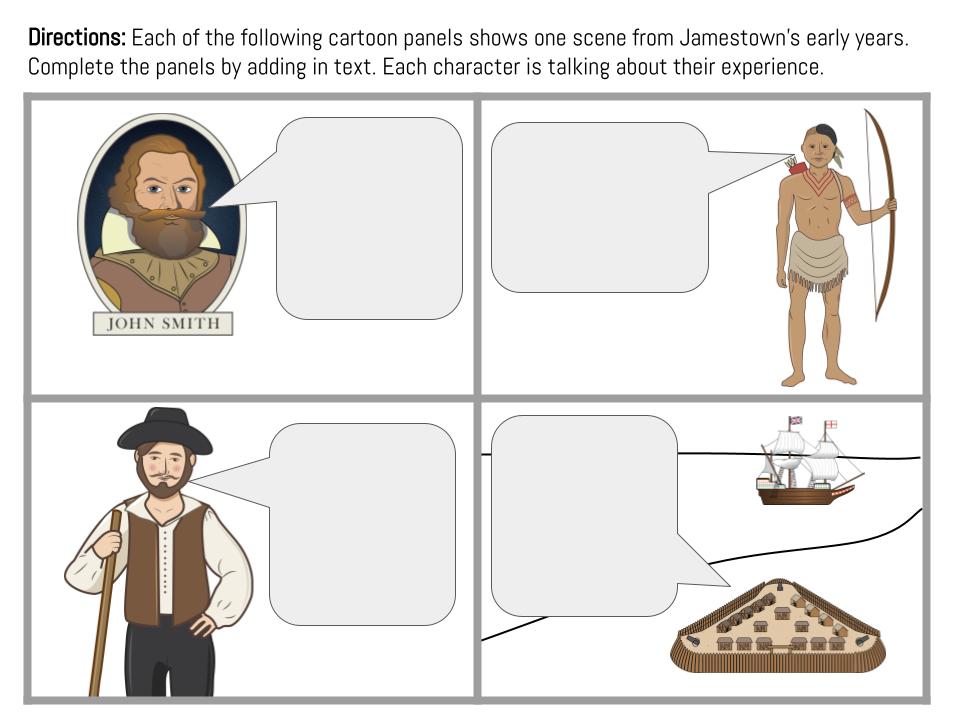
17. Have students sort definitions so that they match with the correct terms.
18. Give students the images of two people. Those images can represent actual historical figures, or they might represent political parties, or groups of people, etc. Then, add a topic to the slide, and have students describe the point of view of each individual. They might draw details or add in text.
19. Present students with a graphic (like a flow chart or a diagram). As questions about the image.
20. Present a primary document or image and ask students how they might use that use that as evidence in support of a claim.
21. Give students a description of a concept/s. Have them sort images that fit with that concept.
22. Have students label items discussed on a map by dragging icons, pins, or titles of the area.
23. Give students a list of types of people in relation to a historical event or era. Have them arrange those people on a spectrum of power/privilege/impact. These can be archetypes or actual historical figures.
For example, this slide has students reorder the archetypes below based on the power they would have during this time. You can view the full lesson that includes this slide here.
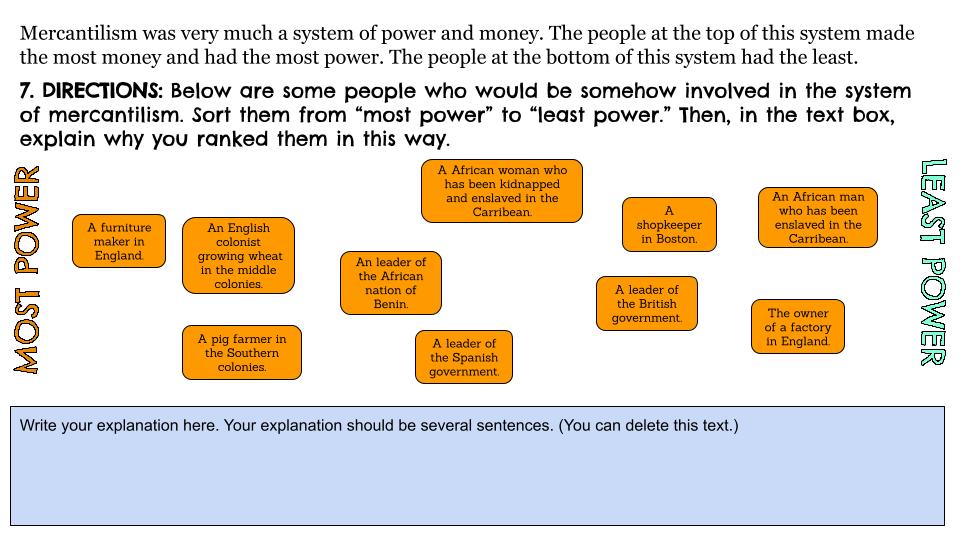
24. Students are given two vocabulary terms from a unit of study. They have to explain how those terms are connected. Students might be given two terms that are obviously closely related, or be given two terms where the link isn’t so obvious for higher-level critical thinking.
25. Present students with an opinion statement. Have a variety of possible answers already written also. Students will pick a statement they agree with. (They can circle the statement.) Have them defend their reasoning as the answer.
Do you have any creative ideas for assessing formative understanding for digital learning?
